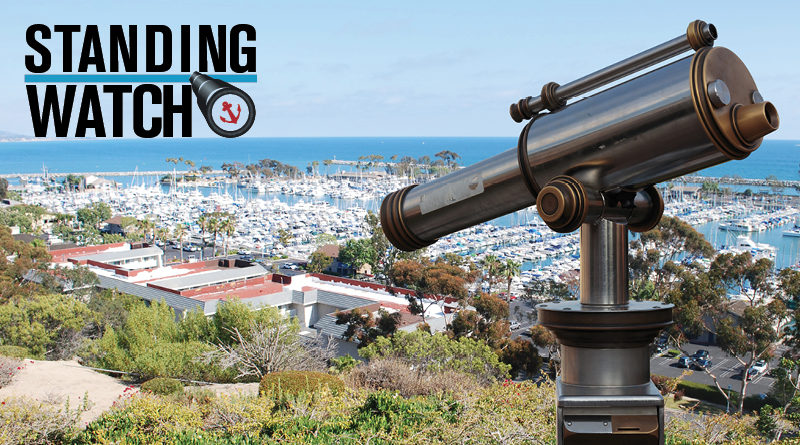State hopes to identify solutions for coastal plastic pollution
Ocean Protection Council hopes to facilitate policy discussion as part of a statewide effort to reduce or prevent marine debris.
STATEWIDE—Many boaters spend time on land before boarding a vessel and heading out to sea. Most marine debris, sadly, also enter the ocean from land. A report on plastic pollution presented to members of California’s Ocean Protection Council in September stated nearly 11 metric tons of plastic “enter the ocean each year, most of which comes from land-based sources.”
The plastic pollution, the report continued, is both costly to the state (cleanups and management) and harmful to marine life (ingestion and entanglement).
Ocean Protection Council made plastic pollution and marine debris a priority in 2007, according to the agency’s staff. Council staff, at the agency’s September meeting, said marine debris is a severe issue and requires “bold solutions” to be eliminated (or at least managed).
“Given the severity of the problem and the need for bold solutions, staff is seeking direction from the council on additional investment and policy approaches to reduce the amount and impact of plastic pollution on California’s coast and ocean ecosystems,” Ocean Protection Council staff said in a report to council members.
Covid-19, according to Ocean Protection Council staff, has only compounded the problem. Legislation aiming to address plastic pollution had been delayed or minimized, for example.
Stay at home orders also changed the way food was consumed – also altering preventative pollution measures.
“The pandemic has created serious challenges for the plastic pollution prevention movement,” Ocean Protection Council staff said in a presentation to council members. “The pandemic has changed how Californians patronize restaurants and cafés: nearly all orders are now takeout or delivery, significantly increasing the use of single plastic food serviceware, and reversing progress made on this issue.”
California’s statewide ban on plastic bags was temporarily suspended in March. State officials did reinstate the ban, but compliance could still be an issue. The effect of the temporary suspension, accordingly, is not yet known.
The question still remains: what policy actions need to be implemented in order for the council – and California in general – to put any sort of dent in marine debris and plastic pollution.
Plastic pollution laws currently on the books only address specific items, such as plastic bags and straws. There is not, however, a comprehensive approach to addressing marine debris or plastic pollution – not locally, not regionally, not at the state level, and not in the private sector.
“California does not have an extended producer responsibility program for types of plastic food serviceware and packaging that are frequently found as litter,” Ocean Protection Council staff said in a report to council members.
State legislators tried to advance proposals for comprehensive plastic pollution regulations earlier this year, but the two major bills in this space failed to advance out of the State Senate or Assembly.
“This year, Assembly Bill 1080 and Senate Bill 54 were being considered in the state legislature, but they did not get final … approval. These bills would have imposed a comprehensive regulatory scheme on producers of single-use plastic packaging and priority single-use plastic products (packaging and products),” Ocean Protection Council staff said in a report to council members. “The bills would have required producers to source reduce their packaging and products to the maximum extent feasible, reduce 75 percent of waste from regulated plastic products by 2032, and ensure that all packaging and products offered for sale in the state after 2032 are recyclable or compostable.”
Ocean Protection Council staff added local jurisdictions are now trying to enact comprehensive plastic pollution regulation, instead of focusing on individual products.
“These ordinances often ban the use of single-food serviceware for dine-in customers, make certain items available only on request, require compostable single-use products for to-go use and require fees for to-go cups or containers,” Ocean Protection Council staff said. “Covid-19 has postponed a number of these upcoming ordinances, but some of these have already been adopted, such as an ordinance in Berkeley.”


